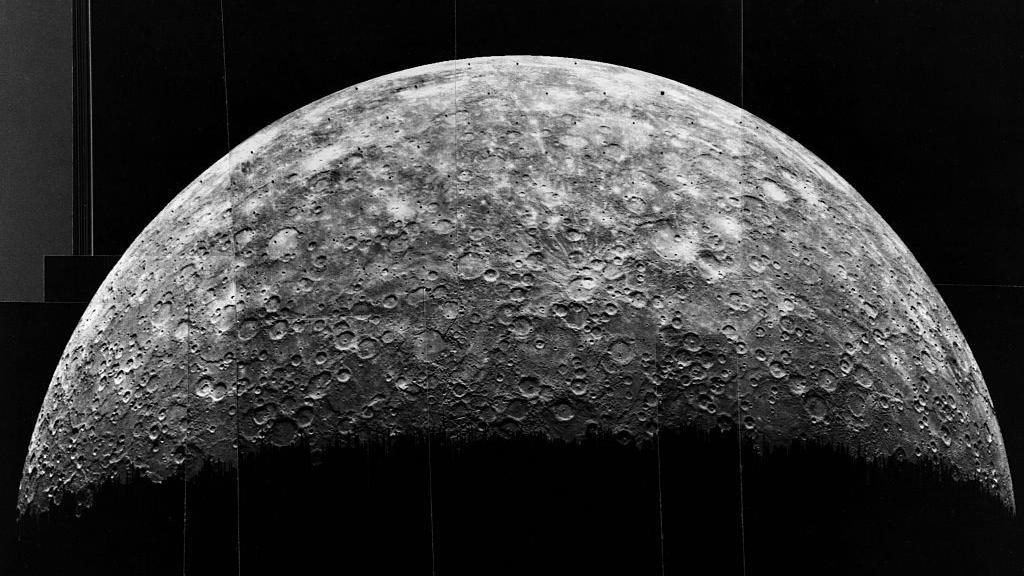Has something bad happened to you? It’s not you: it’s Mercury retrograde’s fault.
At least that’s what people who believe that the planets, their positions and movements affect our lives think.
There is no scientific evidence to prove this planetary impact on everyday life, but it is true that from this Monday until August 28, we are in Mercury retrograde.
It is an astronomical phenomenon in which the smallest planet in the Solar System appears to move in the opposite direction to its natural trajectory.
It happens 3 to 4 times a year and lasts about 3 weeks each time.
And that’s just Mercury. In fact, this phenomenon occurs on all the planets in the Solar System as a result of them orbiting the Sun at different speeds relative to each other.
But let’s go step by step.
In the opposite direction
We usually see Mercury moving across the sky from right to left. However, when it is retrograde, we see it actually moving backwards.
This apparent backward motion occurs because Earth and Mercury orbit the Sun at different speeds.
Mercury completes its orbit faster than Earth, so when it “catches up” to us, it appears as if Mercury is moving in the opposite direction, but in fact it is still following its usual path.
The animation below may help you understand it better.
Move the bar to change the moment in time.
It’s like when one car passes another on the road: the slower vehicle appears to move backward relative to the passing car.
In other words, it’s an optical illusion.
Astrology versus astronomy
Some astrologers consider this astronomical event, which has been observed for thousands of years, to be a time of great negative influence on our daily life, because it brings difficulties, misunderstandings and confusion.
“While astronomy and astrology may have been more closely linked in the past, the general scientific consensus today is that astronomical phenomena such as retrogrades have no predictable effect on people’s lives,” Dhara Patel, a space expert at the UK’s National Space Centre, tells the BBC.
Despite the lack of scientific support, superstitions surrounding this astronomical phenomenon and astrology in general continue to have a strong hold in society.

Astronomy studies celestial bodies and physical, chemical and mathematical phenomena to understand the universe scientifically.
Astrology, on the other hand, examines the supposed effects of zodiac signs, planets and celestial bodies on humans. It is classified as a pseudoscience.
It originated in the ancient civilizations of Mesopotamia in the third millennium BC and began to take the form it has today during the Hellenistic period of the ancient Greek civilization.
The Greeks associated Mercury with their god Hermes, the god of luck, protection, fertility, music and deception.
In Roman mythology, Mercury was the god of commerce and communication, and the messenger of the gods. He also guided souls to the underworld.
Confirmation bias
According to cognitive psychology, belief in astrology and zodiac signs is due to a confirmation bias, which is one of the most common biases in the human mind.
Confirmation bias is a tendency to believe or remember information that matches our pre-existing beliefs and interpret it selectively and biasedly, without solid scientific evidence.

Clinical psychologist Zeinab Ajami tells the BBC that “people tend to believe things that make them feel calm or comfortable, and that don’t involve the brain having to constantly analyse and re-evaluate an idea or situation.”
“Astrology offers a quick and easy explanation of everything that can happen to people without them having to examine or investigate the possible real reasons and the multiple layers of their problems,” he adds.
A fascinating world
Mercury is the smallest and fastest planet in the Solar System, completing one orbit around the Sun every 88 Earth days. It is only slightly larger than the Moon.
It has several interesting features. For example, it is the closest to the Sun and yet it is not the hottest in the Solar System. That position is held by Venus.
In addition, its sunrises are accompanied by micrometeoroid showers and intense magnetic tornadoes form on its surface.
According to NASA, the latter are “twisted bundles of magnetic fields that connect the planet’s magnetic field to space.”
So now you know: Mercury doesn’t have to go backwards or create chaos in our lives to prove that it is a fascinating world.
*With reporting by Ana Pais (BBC Mundo) and Marie-José Al Azzi (BBC Arabic).
Keep reading:
* 7 things you should do (and 3 things you shouldn’t) during full moon nights
* Astrological events that are more feared than Mercury retrograde
* What your sign should do when Mercury retrograde ends

Click here to read more stories from BBC News Mundo.
You can also follow us on Youtube, Instagram, TikTok, X, Facebook and in our new WhatsApp channelwhere you’ll find breaking news and our best content.
And remember that you can receive notifications in our app. Download the latest version and activate them.
